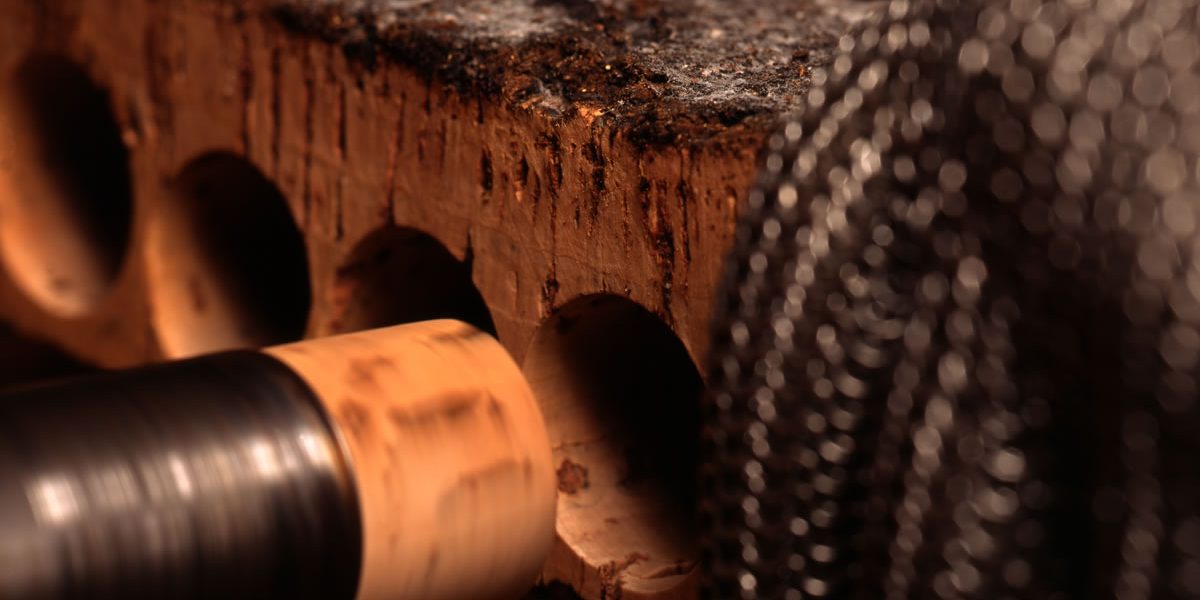So how do you get from a piece of cork oak tree bark to a natural cork stopper that nurtures and preserves the wine in a bottle? The story goes like this:
1. Harvest – once every nine years or so a cork tree is stripped of its bark by a very skilled woodsman with a very sharp axe. This bark comes off the tree in unevenly shaped chunks, with the woodsman trying to product the biggest possible pieces.
2. Resting – the cork ‘planks’ are left to stabilise for around 6 months, exposed to the elements as the cellular structure changes to reflect the fact that the bark is no longer part of a living organism (the tree!).
3. Cooking – the cork is then put in a vat of boiling water for an hour to make it more pliable and also to kill off any bugs that might be present.
4. Another rest – the cork sits in a warehouse for 3 weeks as once again in needs to stabilise after the short, sharp shock of the cooking process.
5. Punching – the roughly shaped cork planks are now trimmed off and then cut into strips using a circular saw (in most cork producing factories you will see one of the workers with a missing little finger, which will have been chopped off in a moment of distraction when cutting these strips – ow!). These strips then have the corks punched out of them by a worker using a manual machine, who needs to have a good eye for where he can get the best quality corks out of the strip and also the maximum number of corks by punching them close together.
6. Trimming – the corks now pass through a sort of sanding machine that trims of the rough edges and smooths them down to exactly the right dimensions (depending on the batch being produced).
7. Grading – the corks are passed through a laser scanner which grades corks according to how many imperfections there are in their surface. The higher quality corks then pass through a visual inspection to make sure there are no imperfections at all in the premium quality corks. (This has to be one of the more boring jobs in the world, traditionally performed by women, who have to sit in front of a conveyor belt of corks from 9 to 5, just looking for less than perfect corks!)
8. Washing – the corks are put in what looks like an enormous washing machine, where they get disinfected using hydrogen peroxide.
9. Drying – the humidity level of the corks now needs to be lowered so that the cork will perform its role correctly of looking after the wine in a bottle.
10. Final treatment and printing – the cork stoppers are given a final treatment to make them water tight and also to make them more slippery so that they are easier to fit into wine bottles; the wine makers logo is added to the cork when required.
All the cork off-cuts, rejects and cork dust are then put to other usages such as composite cork products (cork granules, cork flooring, cork insulation boards etc) so nothing gets wasted.








